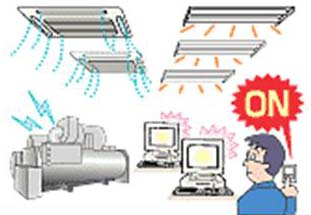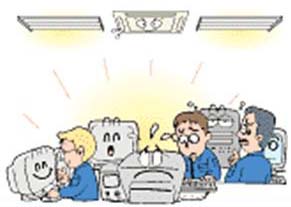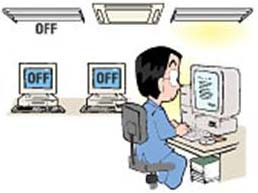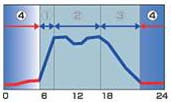Characteristics of energy consumption for this time period
Period before work starts


"As this is the period for building up to start of work energy consumption associated with warming up of the air conditioning system is high. Especially during the winter this time period has the largest amount of energy consumption. In addition, in conjunction with people arriving for work this is the time period where lighting and outlet loads speedily increase.


"As this is the period for building up to start of work energy consumption associated with warming up of the air conditioning system is high. Especially during the winter this time period has the largest amount of energy consumption. In addition, in conjunction with people arriving for work this is the time period where lighting and outlet loads speedily increase.
| No. | Primary energy conservation measures for this time period |
| 1 | If the trend during seasons when heat load is low is the same as during the summer and winter, delay starting time of the air conditioning system |
| 2 | During heating and cooling periods, turn off intake of fresh air to reduce load |
| 3 | Close blinds for windows on the east side of the building after completion of work to reduce solar radiation load the next morning |
| 4 | Perform a purge early in the morning during cooling periods to remove residual heat from the structure that is generated by solar insolation and internal heat generation during the night and on holidays to reduce the load on the air conditioning system |
| 5 | Use a flow through boiler with a fast startup time for heating to reduce operating time |




 As this time period is outside of working hours, general air conditioning is stopped and most lighting is turned off; therefore, when compared to daytime, energy consumption is a whole lot lower. However, as with the term "base load", energy consumed during this period is consumed 24 hours a day all year; therefore energy conservation effects during this period are large.
As this time period is outside of working hours, general air conditioning is stopped and most lighting is turned off; therefore, when compared to daytime, energy consumption is a whole lot lower. However, as with the term "base load", energy consumed during this period is consumed 24 hours a day all year; therefore energy conservation effects during this period are large.